Abstract
Coughing was induced in seven normal and eight asthmatic subjects by giving successive inhalations of citric acid aerosols of progressively higher concentration (range 0.5-32%). A baseline cough response was obtained on each of four experimental days, and there was no significant difference between days in this respect. Then the subjects received by inhalation either a bronchodilator (salbutamol 5 mg or ipratropium 1 mg) or placebo, in a paired double blind crossover design. A second citric acid run followed and was used for paired drug-placebo comparisons. In the asthmatic subjects the cough response was diminished by both bronchodilators (p less than 0.05), and the cough threshold was significantly higher after ipratropium but not salbutamol. In normal subjects no significant effects were found. Airways calibre was assessed, by an oscillatory technique that measures the resistance of the respiratory system (Siemens Siregnost FD 5), in four of the seven normal and all eight asthmatic subjects. The mean respiratory resistance was higher in asthmatic than in normal subjects, and fell significantly after both bronchodilators. In normal subjects smaller decreases in respiratory resistance occurred, significant only with salbutamol. The simplest hypothesis which explains the results relates change in cough response to altered neuroreceptor sensitivity associated with rapid changes in bronchial calibre.
Full text
PDF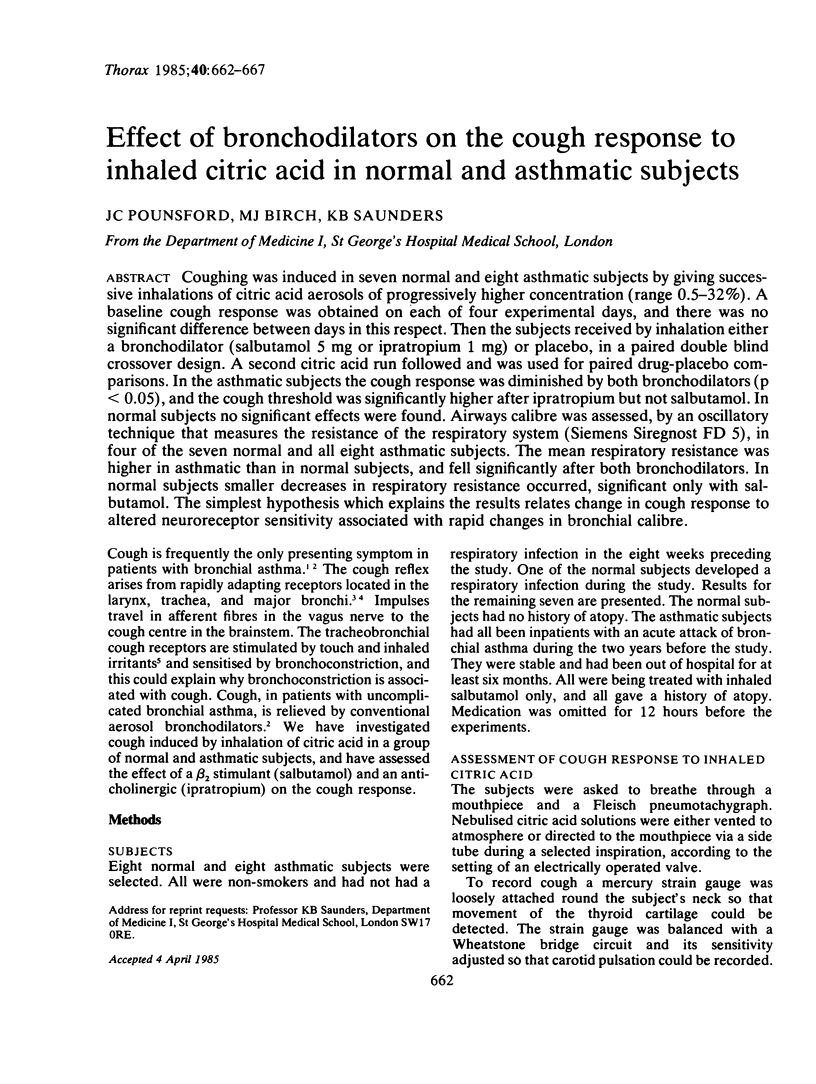

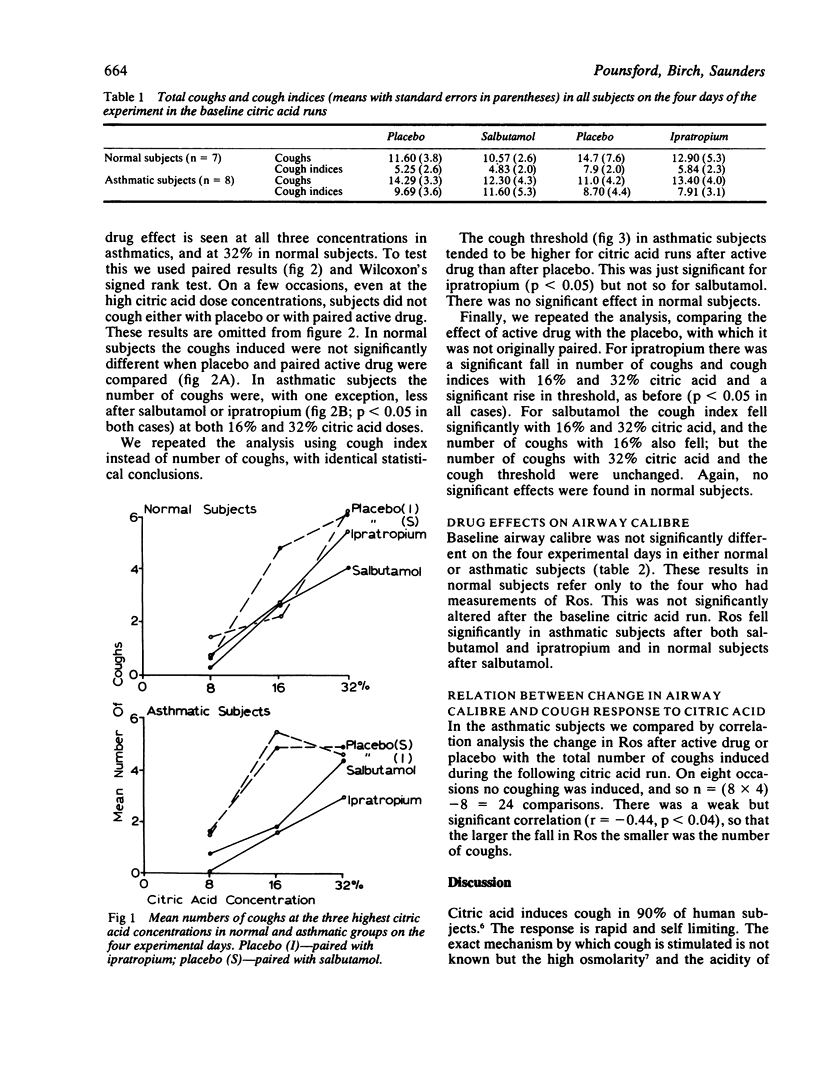
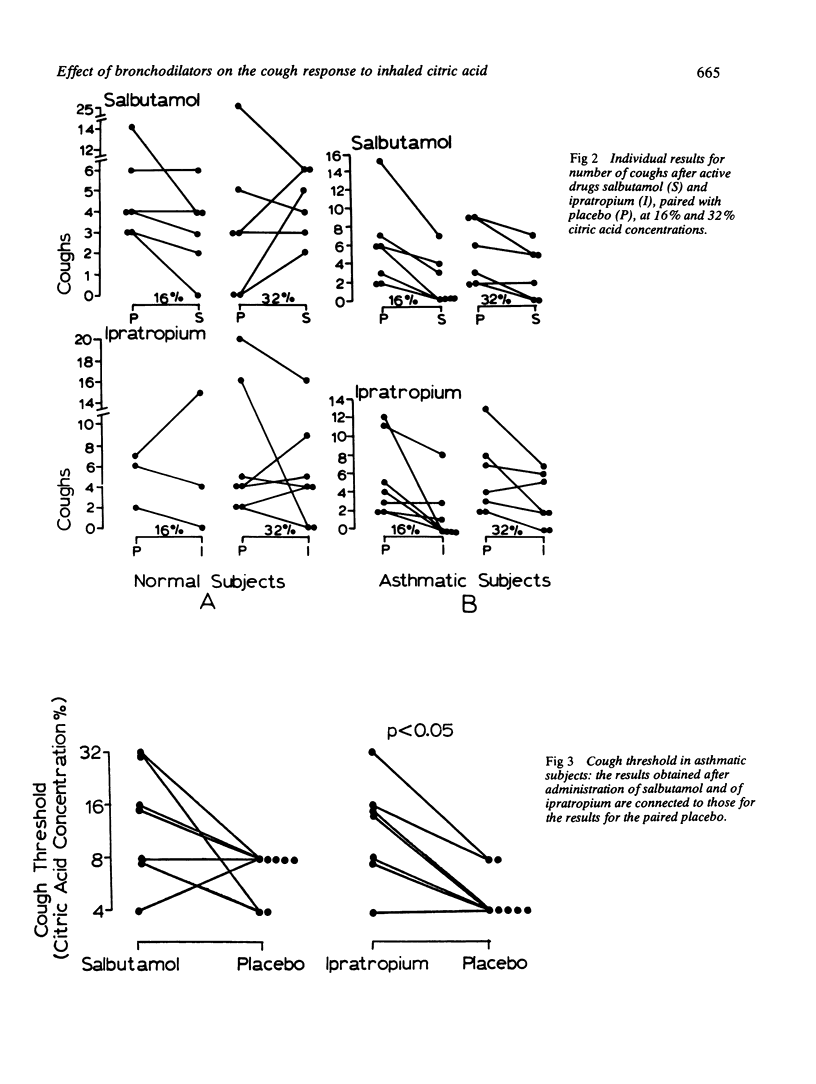
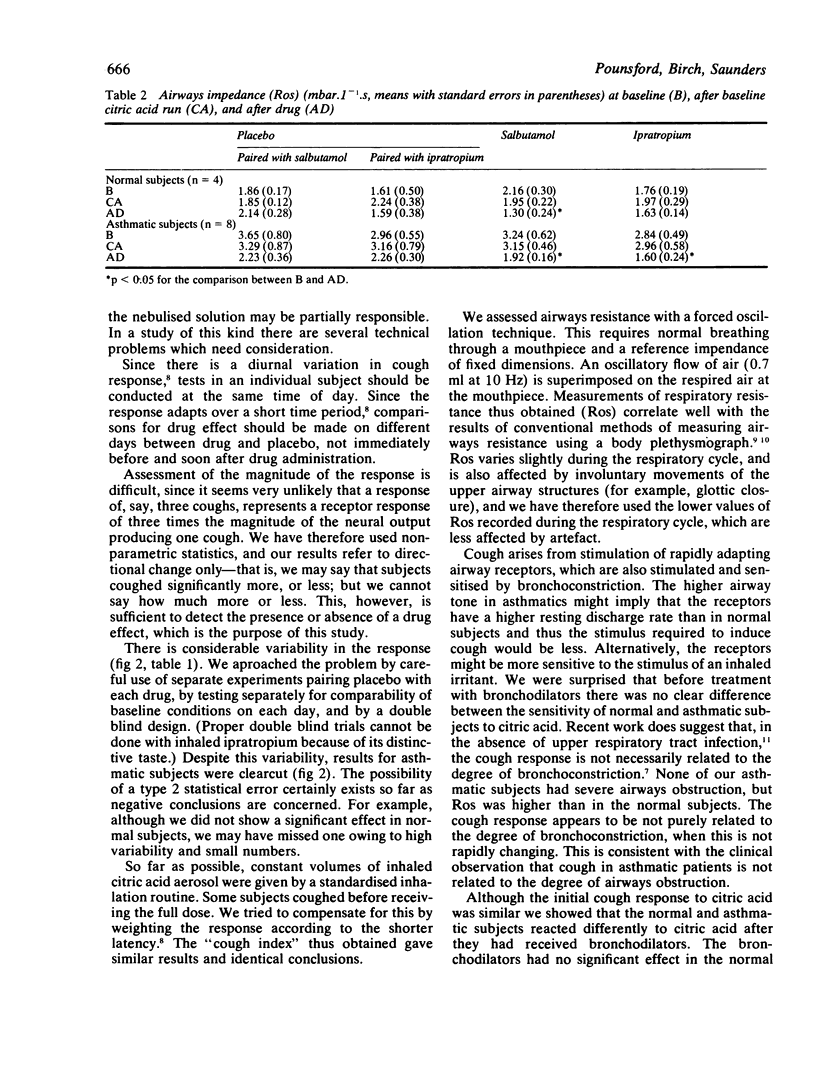
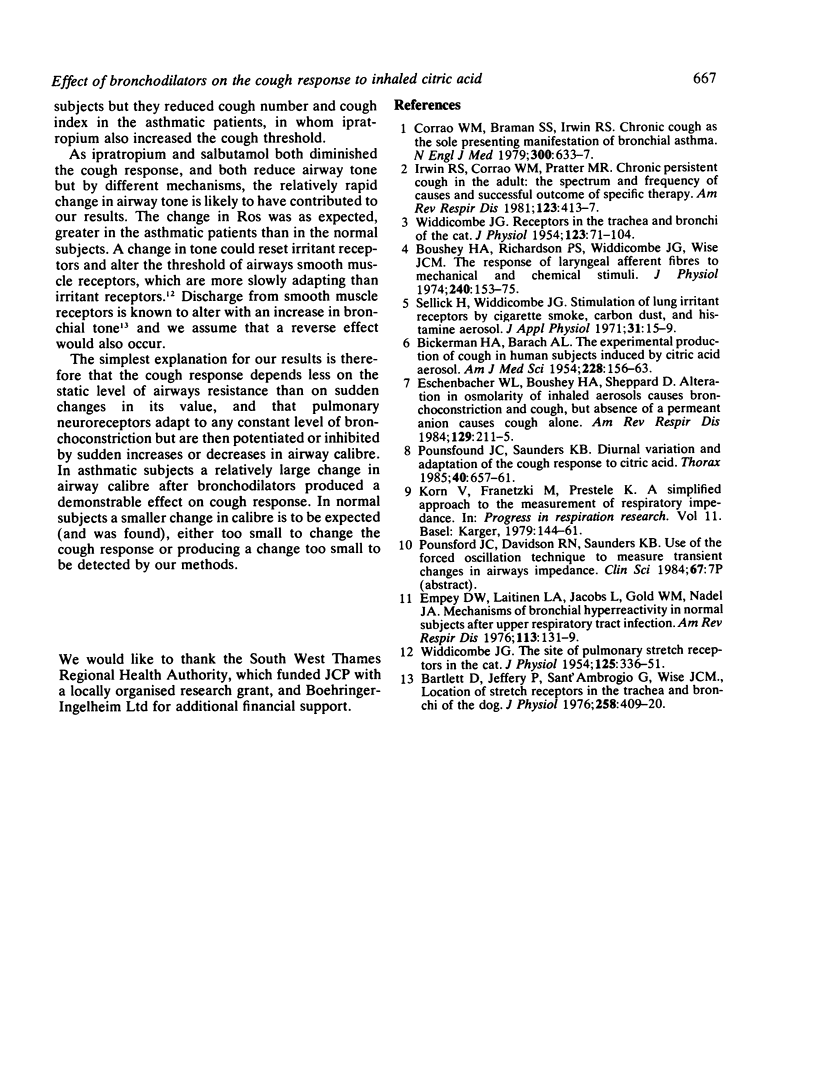
Selected References
These references are in PubMed. This may not be the complete list of references from this article.
- BICKERMAN H. A., BARACH A. L. The experimental production of cough in human subjects induced by citric acid aerosols; preliminary studies on the evaluation of antitussive agents. Am J Med Sci. 1954 Aug;228(2):156–163. doi: 10.1097/00000441-195408000-00005. [DOI] [PubMed] [Google Scholar]
- Bartlett D., Jr, Jeffery P., Sant'ambrogio G., Wise J. C. Location of stretch receptors in the trachea and bronchi of the dog. J Physiol. 1976 Jun;258(2):409–420. doi: 10.1113/jphysiol.1976.sp011427. [DOI] [PMC free article] [PubMed] [Google Scholar]
- Boushey H. A., Richardson P. S., Widdicombe J. G., Wise J. C. The response of laryngeal afferent fibres to mechanical and chemical stimuli. J Physiol. 1974 Jul;240(1):153–175. doi: 10.1113/jphysiol.1974.sp010605. [DOI] [PMC free article] [PubMed] [Google Scholar]
- Corrao W. M., Braman S. S., Irwin R. S. Chronic cough as the sole presenting manifestation of bronchial asthma. N Engl J Med. 1979 Mar 22;300(12):633–637. doi: 10.1056/NEJM197903223001201. [DOI] [PubMed] [Google Scholar]
- Empey D. W., Laitinen L. A., Jacobs L., Gold W. M., Nadel J. A. Mechanisms of bronchial hyperreactivity in normal subjects after upper respiratory tract infection. Am Rev Respir Dis. 1976 Feb;113(2):131–139. doi: 10.1164/arrd.1976.113.2.131. [DOI] [PubMed] [Google Scholar]
- Eschenbacher W. L., Boushey H. A., Sheppard D. Alteration in osmolarity of inhaled aerosols cause bronchoconstriction and cough, but absence of a permeant anion causes cough alone. Am Rev Respir Dis. 1984 Feb;129(2):211–215. [PubMed] [Google Scholar]
- Irwin R. S., Corrao W. M., Pratter M. R. Chronic persistent cough in the adult: the spectrum and frequency of causes and successful outcome of specific therapy. Am Rev Respir Dis. 1981 Apr;123(4 Pt 1):413–417. doi: 10.1164/arrd.1981.123.4.413. [DOI] [PubMed] [Google Scholar]
- Pounsford J. C., Saunders K. B. Diurnal variation and adaptation of the cough response to citric acid in normal subjects. Thorax. 1985 Sep;40(9):657–661. doi: 10.1136/thx.40.9.657. [DOI] [PMC free article] [PubMed] [Google Scholar]
- Sellick H., Widdicombe J. G. Stimulation of lung irritant receptors by cigarette smoke, carbon dust, and histamine aerosol. J Appl Physiol. 1971 Jul;31(1):15–19. doi: 10.1152/jappl.1971.31.1.15. [DOI] [PubMed] [Google Scholar]
- Stokes M., Young A. The contribution of reflex inhibition to arthrogenous muscle weakness. Clin Sci (Lond) 1984 Jul;67(1):7–14. doi: 10.1042/cs0670007. [DOI] [PubMed] [Google Scholar]
- WIDDICOMBE J. G. Receptors in the trachea and bronchi of the cat. J Physiol. 1954 Jan;123(1):71–104. doi: 10.1113/jphysiol.1954.sp005034. [DOI] [PMC free article] [PubMed] [Google Scholar]
- WIDDICOMBE J. G. The site of pulmonary stretch receptors in the cat. J Physiol. 1954 Aug 27;125(2):336–351. doi: 10.1113/jphysiol.1954.sp005162. [DOI] [PMC free article] [PubMed] [Google Scholar]


